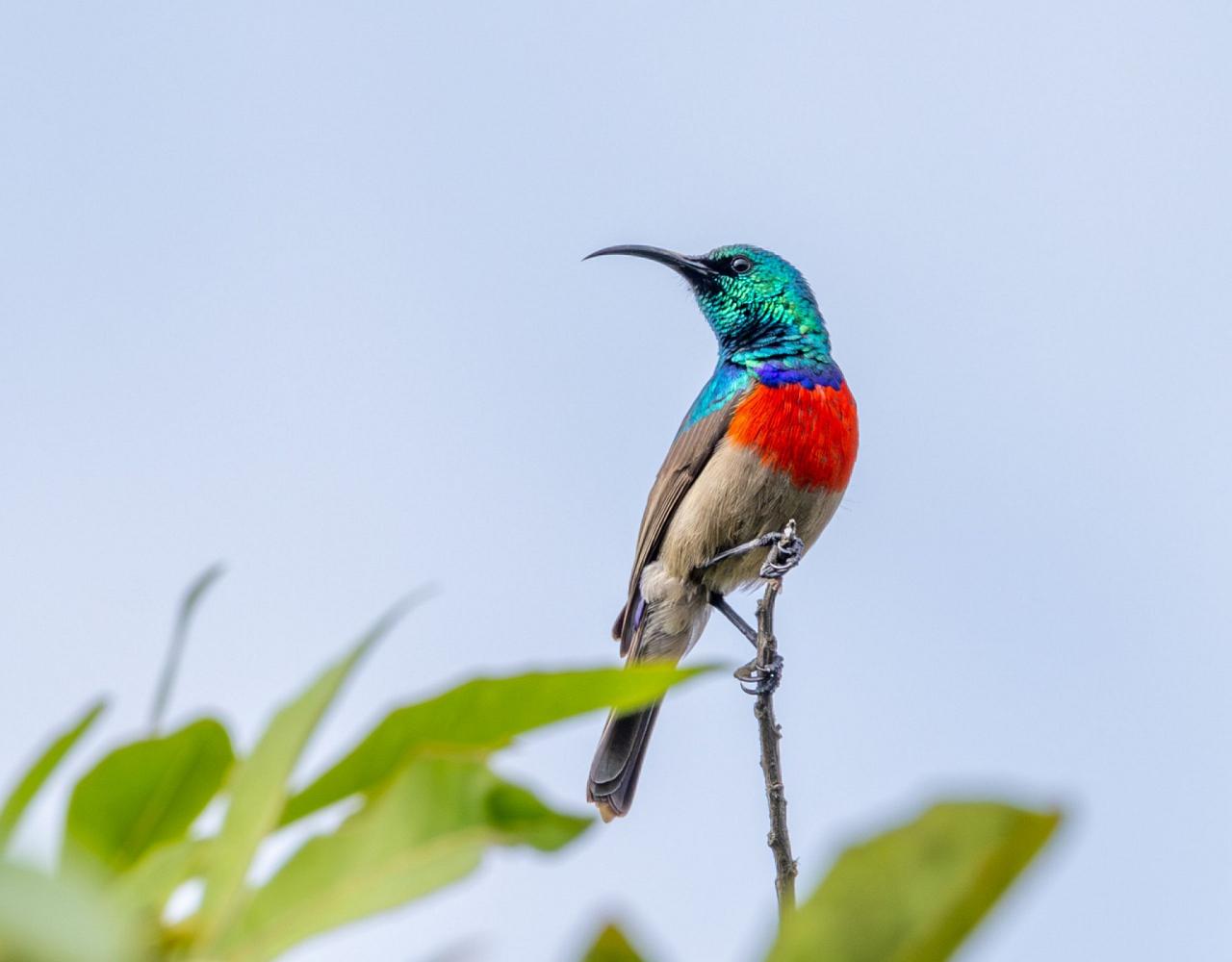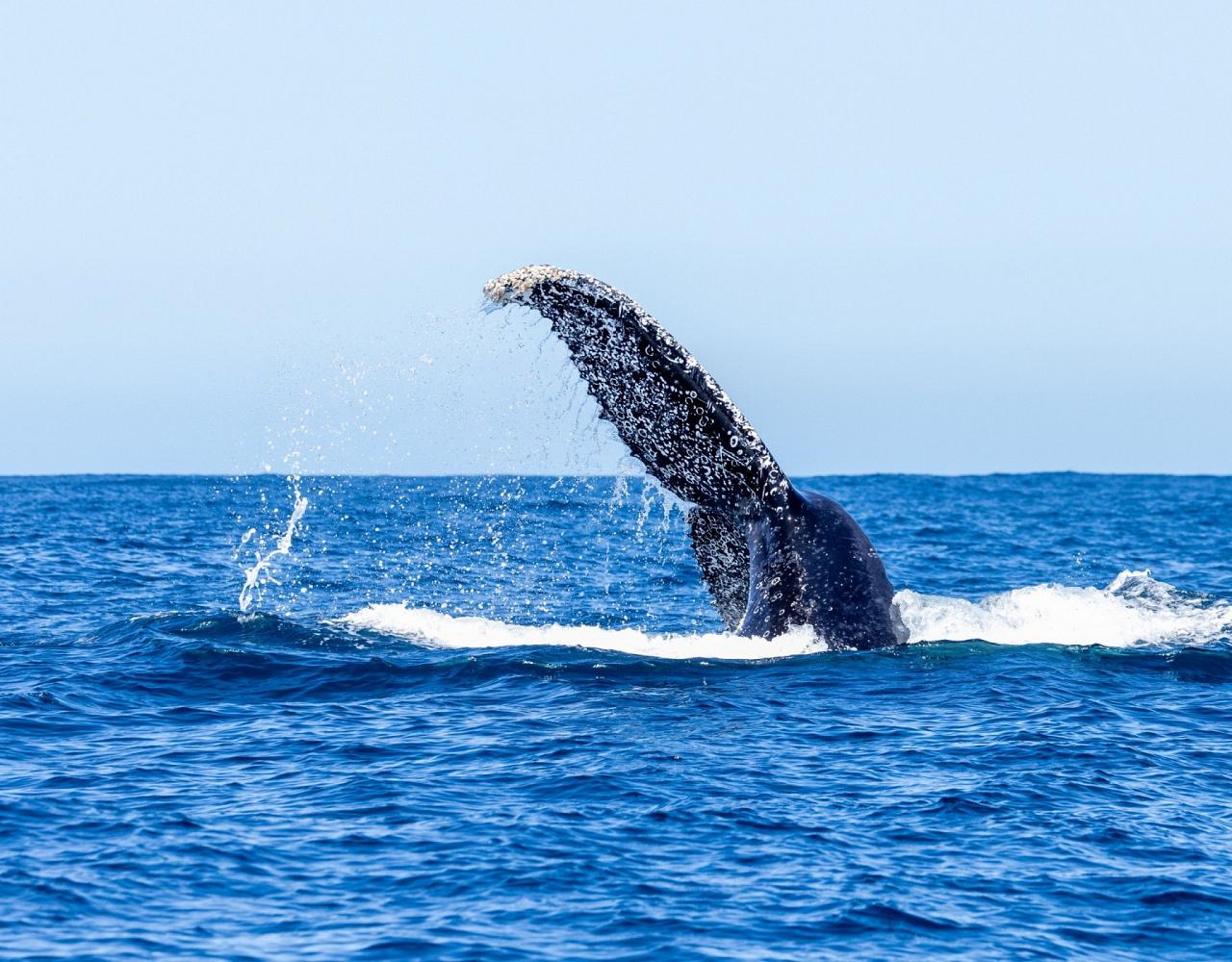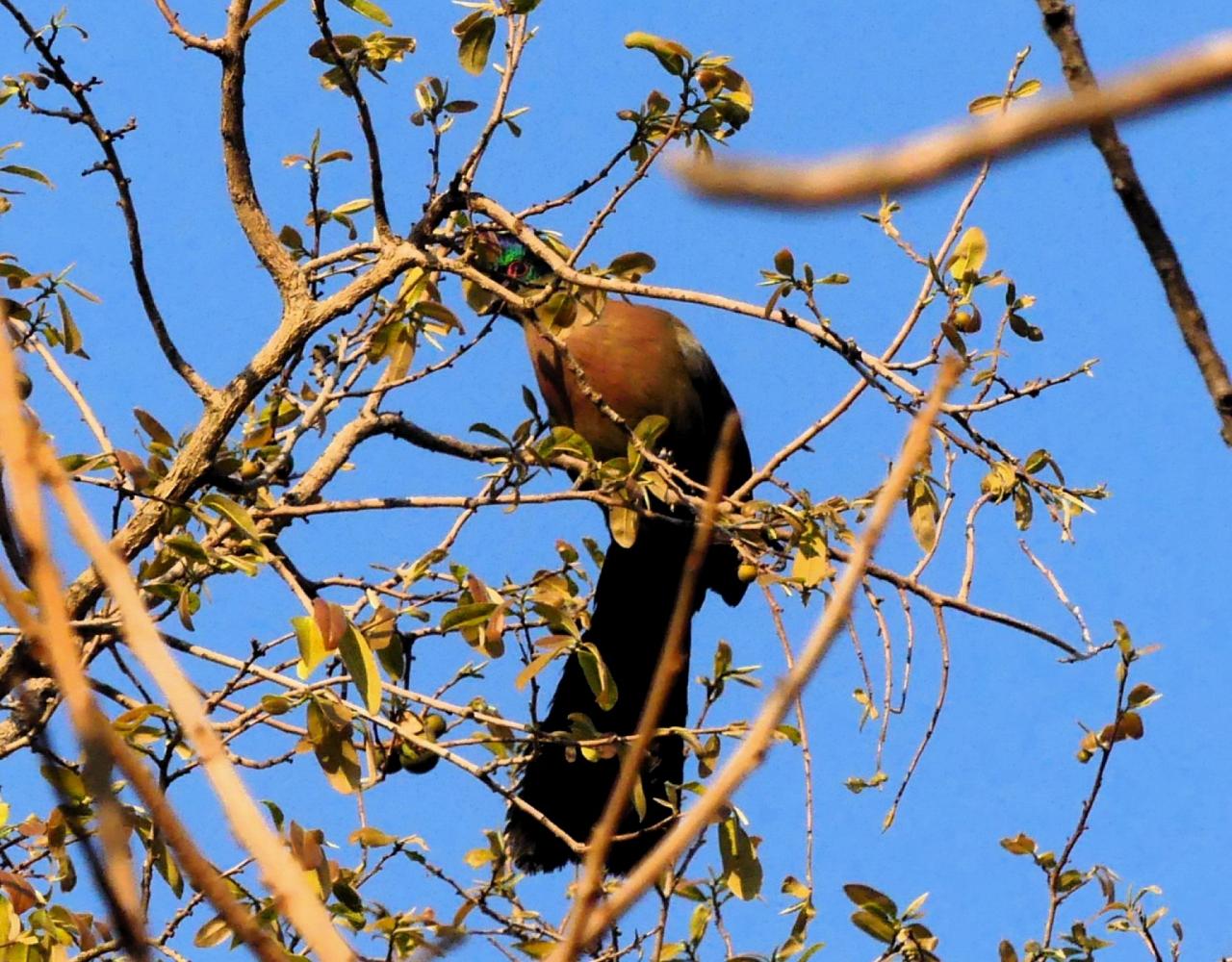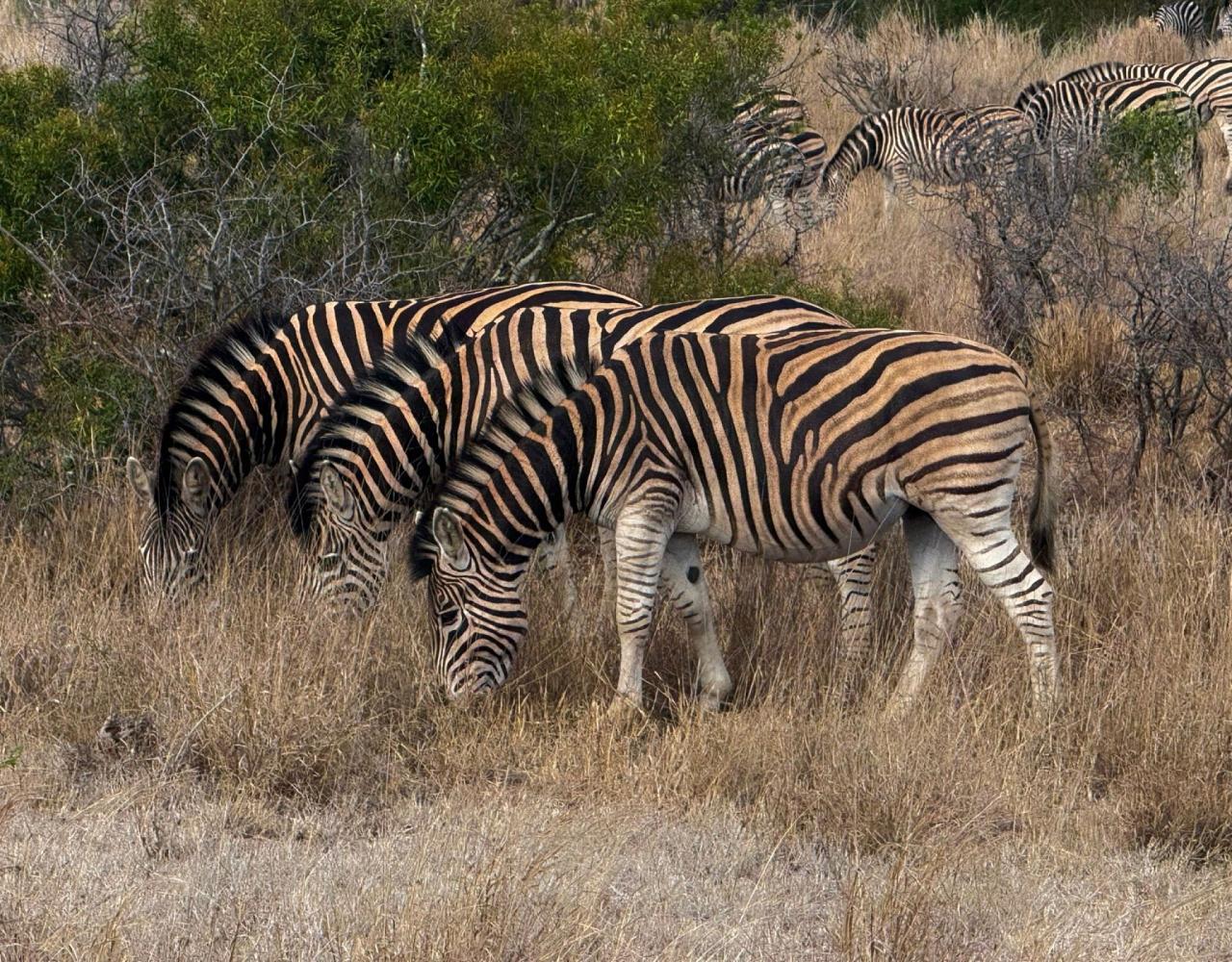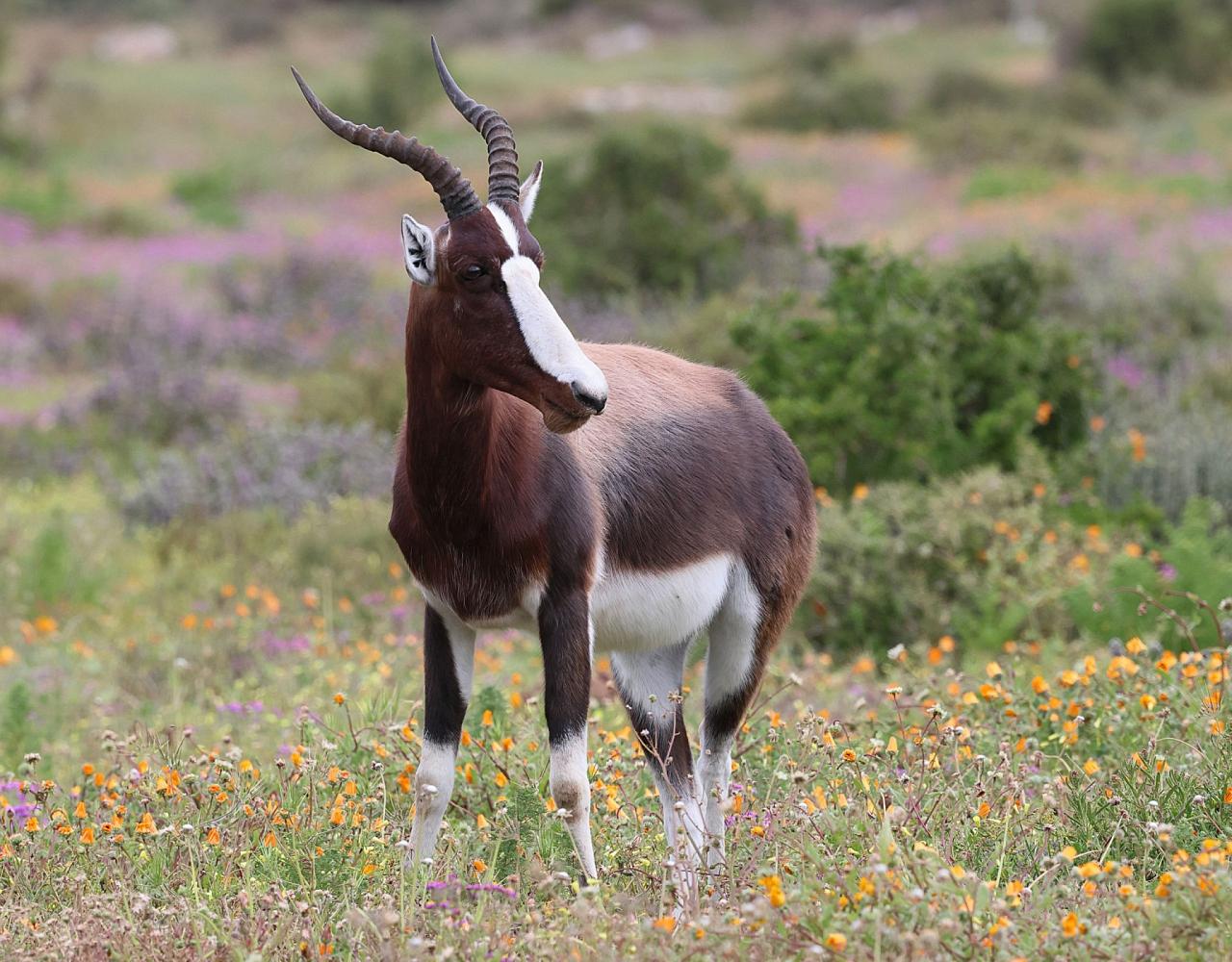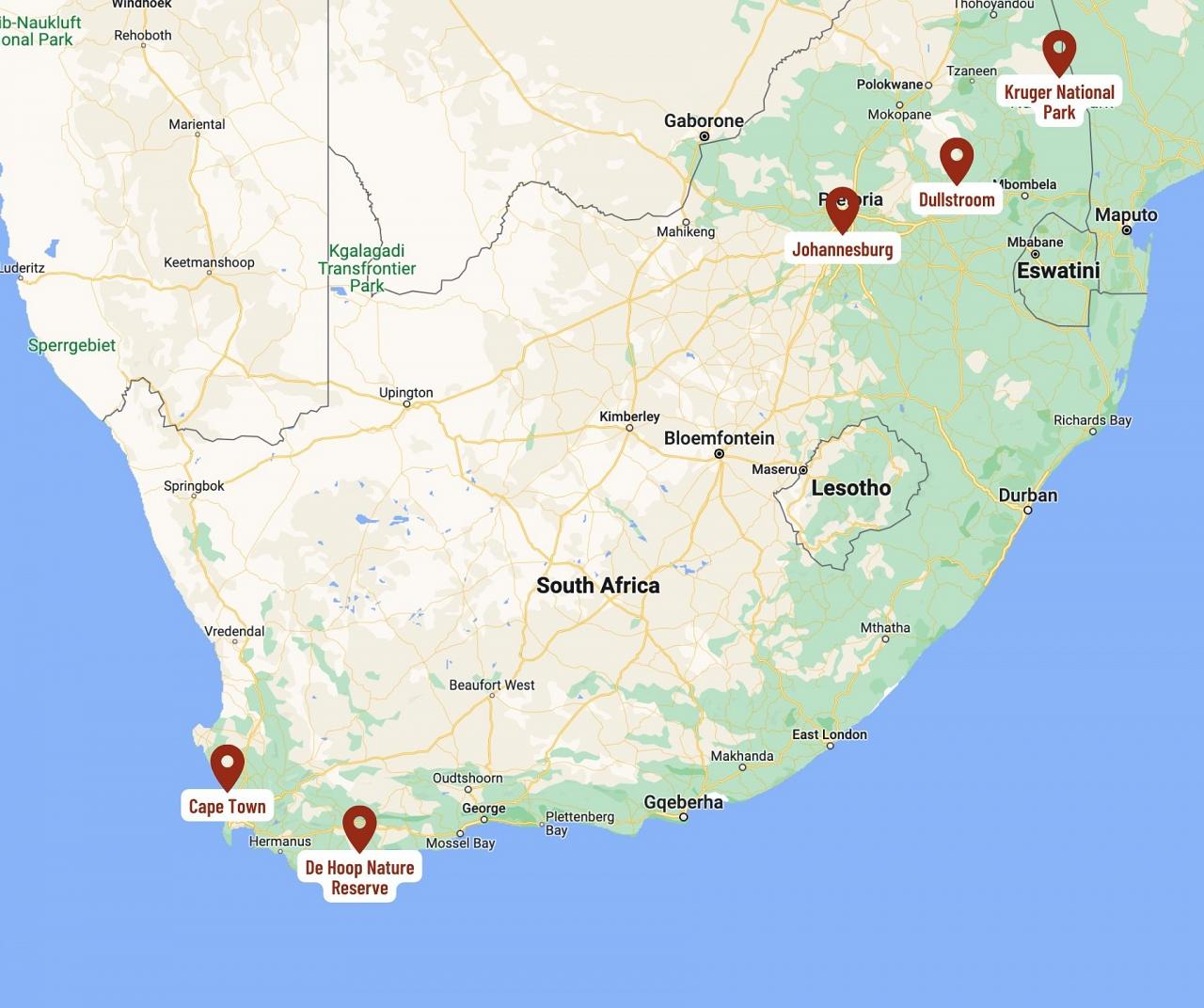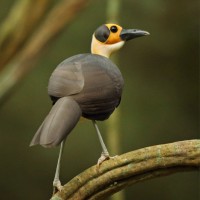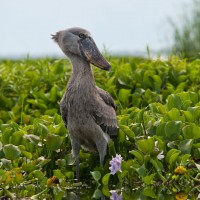Trip Itinerary
Itineraries are guidelines; variations in itinerary may occur to account for weather, road conditions, closures, etc. and to maximize your experience.
Tues., Sept. 16 Arrive in Cape Town
Nearly all flights into Cape Town originate in Johannesburg (“Joburg” to locals), South Africa, so please plan your flights from the USA to arrive in Cape Town today (there are direct flights from Atlanta). A representative from our host company, Birding Africa, welcomes you as you arrive at the Cape Town airport, then you transfer and check into our guest house. Given that folks arrive throughout the day, dinner is at your leisure tonight. However, those arriving in time may certainly gather together (although some may just head off to sleep!). We recommend booking an extra night and coming in on September 15 to rest up from your flights our lodgings are a great choice for this.
Accommodations: A lovely guest house in Cape Town
Wed., Sept. 17 Cape Town | Kirstenbosch Botanical Gardens | Strandfontein Wetlands
Situated on the slope of towering Table Mountain National Park is the world-renowned Kirstenbosch Botanical Gardens. The Cape Fold Mountains and the Atlantic Ocean provide a spectacular backdrop to this endemic-filled plant community. One of the most pristine botanical gardens in the world, this park abuts the wilds of the national park and provides easy access to many of the endemic plant and bird species of the area. Iridescent Malachite Sunbirds, Swee Waxbill, Pin-tailed Whydah, Cape Canary, Sugarbird, and Olive Thrush are some of the species we should see here. All of this mixes perfectly with both natural plantings and planted areas, complete with Proteas, Leucadendrons, and hundreds of other plants that are found in one of the most restricted, diverse, and rare biomes in the world.
Today we also visit Strandfontein wetlands, which are home to swathes of Greater Flamingo, and three species of ibis: Hadeda, Glossy, and African Sacred. Great White Pelican, Hottentot Teal, Maccoa Duck, Black Crake, Water and Spotted Thick-Knees, and other waterfowl should also be present. We also look for White-throated Swallow and Levaillant’s Cisticola near these wetlands.
We return to our guest house for a relaxing evening.
Accommodations in Cape Town (B,LD)
Thurs., Sept. 18 South of Cape Point Pelagic Trip | African Penguin
We start the morning by boarding our pelagic boat in Simonstown Harbour and heading out through False Bay. Here we observe Cape Fur Seal, Hartlaub’s Gull, and all four cormorant species: Bank, Cape, White-breasted, and Crowned. At any point on this boat trip, we have a chance of seeing Southern Right and Humpback, and other whale species (Killer Whales if we are very lucky). The landlord of South Africa’s southern seas, the Great White Shark, is common in these waters but we would have to be very lucky to see one.
Further out we should start seeing different albatross, petrels, and shearwaters (Shy, Indian Yellow-nosed, Southern Royal, Northern Giant Petrel, White-chinned Petrel, Wilson’s Storm Petrel, and Sooty Shearwater). On a clear day, the scenery from the boat is stunning with the Cape Mountains and the Cape of Good Hope standing boldly against the sky.
We finish the day by visiting a colony of African Penguins. This species uses coastal dunes to excavate burrows where they raise their two young. Our timing of the trip should allow us to see some of the first young to emerge from the nest.
This section of rocky coastline is also a place where Rock Hyrax are present. They utilize the rocky outcrops of the coastline (above high tide) for their denning sites. They cute little mammals superficially resemble marmots, but are actually the closest living relative to elephants and manatees!
Accommodation in Cape Town (B,L,D)
Fri., Sept. 19 West Coast National Park
The still, aquamarine seas of Langebaan Lagoon adjacent to West Coast National Park are home to many of South Africa’s shorebird species. It is also an area where some of the nation’s best wildflower displays take place.
The mudflats and water treatment plant in the area provide great habitats where we hope to find Curlew Sandpiper, Little Stint, Black-winged Stilt, and maybe Marsh Sandpiper as we scan through the flocks of shorebirds. And there is always a chance of finding the less common White-fronted Plover, Chestnut-banded Plover, and the scarce Terek Sandpiper. South African Shelduck and Yellow-billed Duck are just two of the many species that we should find in this water-based area.
West Coast National Park’s grasslands are interspersed with low-lying granite outcrops. This is ideal habitat for Black Harrier, Southern Black Korhaan, and Cape and Grey-winged Francolins. Other species we look for include: Karoo Robin, Chestnut-vented Titbabbler, Layard’s Titbabbler, Gray-backed Cisticola, Common Fiscal Shrike, Cape Wagtail, and Bokmakierie.
Our visit to these grasslands in September coincides with the Western Cape’s spring wildflower bloom. Annuals such a Gazanias, and bulbs including Ornithogalum and Lachenalia, are common in a riot of color.
Accommodations in Cape Town (B,L,D)
Sat., Sept. 20 Overberg | Agulhas Plains | De Hoop Reserve
To the east, between Cape Town and the Agulhas Plains lies the Hottentot Holland Mountains. We start our day with a stop in these sandstone mountains, birding the diverse fynbos biome to look for two of the country’s most iconic endemics: Cape Rockjumper and Cape Sugarbird. While descending the mountains towards the plains, we soak up the impressive landscape and look for Cape Siskin, Orange-breasted Sunbird, Cape Bulbul, the skulking Victorin’s Warbler, and confiding Cape Spurfowl. The fynbos along this part of the trip are more diverse than those to the west, given the higher accumulation of rain and moderate temperatures. We spend some of our road time to the plains exploring this biome.
As we drop down into the Agulhas Plains we look for soaring Cape Vulture. Potberg Mountain has the only nesting colony of this species in the Western Cape, so today and tomorrow are our best chances to find this species. As we enter the plains, we start looking for South Africa’s national bird, the elegant Blue Crane. The wheat fields lead into native habitats where the crane, Capped Wheatear, Denham’s Bustard, and Agulhas Long-billed Lark are found.
We are also on the lookout for the increasingly rare Bontebok and Cape Mountain Zebra, along with some of the area’s numerous species of tortoises as we drive through this habitat. Yellow Mongoose is also found here, with another larger mammal: The Eland. We have plenty of opportunities to find and then photograph these different species today.
Accommodations at the De Hoop Nature Reserve (B,L,D)
Sun., Sept. 21 De Hoop Nature Reserve | Koppie Alleen
We might begin the day near the reserve headquarters, nestled in a thicket of dense and gnarled milkwood. Here we look for Bar-throated Apalls, Sombre Greenbul, and Southern Boubou. Thickets at the base of the mountain are home to the Southern Tchagra and Knysna Woodpecker, and the wildlife mentioned above. Next to the headquarters is De Hoop Vlei, a large, irregularly shaped lake that can at times hold huge numbers of waterfowl. We look for pairs of Great Crested Grebe, a very desirable and attractive species.
We finish the day looking for Southern Right Whale off the coast of Koppie Alleen. These spectacular, and once rare whales use the warmer waters off of South Africa to give birth and mate. All of this goes on within a few hundred yards of the coast, making for spectacular views!
Accommodations at the De Hoop Nature Preserve (B,L,D)
Mon., Sept. 22 South Coast to Cape Town
We spend today searching different sections of the South Coast for shorebirds, seabirds, and marine mammals. We also have opportunities to look for and find any of the missing specialties we might have missed in the previous three days.
More Southern Right Whales and Cape Fur Seals should be seen offshore as we drive this dramatic section of South Africa’s Coast. Different cormorant nesting colonies are visible in some of the bays that make up this geologic tapestry, and then there are the sandy stretches of beach. Oh yes, and more opportunities to observe African Penguin! Combine this with looking for land birds around coastal oases, and it is a fine way to spend our last day in this remarkably diverse part of the world.
Accommodations in Cape Town (B,L,D)
Tues., Sept. 23 Johannesburg | Dullstroom
Mid-morning finds us at the Cape Town Airport boarding our flight towards Kruger National Park. It is not a long flight (two hours), but we do have the advantage of seeing these different parts of the country from the plane. Arid environments speak to the dryness of the interior of the country. We land in Joburg around noon and then proceed to lunch before starting the afternoon drive to Dullstroom and our evening’s lodging.
Most of the habitat we pass through on our two to three-hour drive is higher elevation grassland. Mixed in with these grasses are native Campanulas and daisies, all adding to a diverse palette for birding. Birds of this habitat should include both Grey Crowned Cranes, and hopefully some of the resident passerines (Long-tailed Widowbird, pipits, and larks) we search for tomorrow. Although wildlife is not as plentiful or diverse as we find in Kruger, we do look for Rhebuck, Steenbok, and Duiker. Our arrival is around dinnertime, which gives us a little time to explore or relax at our lodging.
Accommodations at Dullstroom (B,L,D)
Wed., Sept. 24 Dullstroom | Drakensberg
We spend the morning birding the areas around Dullstroom with the intent of finding Wing-snapping and Pale-crowned Cisticolas, Sentinel Rock-Thrush, Mountain Wheatear, and hopefully Ground Woodpecker! The higher elevation grasslands should give us opportunities to see Gurney’s Sugarbird and to find three endemics — Yellow-breasted Pipit, Red-winged Francolin, and Eastern Long-billed Lark. Walking and birding the grasslands could turn up many other species that get flushed and take flight.
Our afternoon is spent driving up and on to the Great Escarpment. The escarpment runs the width of South Africa. Enjoy stunning views and some remarkable geology. We arrive in time for dinner and then relax afterwards as we are treated to the incredible nocturnal sounds while viewing the Southern Cross star constellation that lies low in the horizon.
Accommodations at Mount Sheba Private Reserve (B,L,D)
Thurs., Sept. 25 Afromontane Forest of Mount Sheba
This is a new habitat for many! Afromontane forests are areas of higher elevation in Africa that are characterized by being forested and more mesic than surrounding low-lying drier areas with fewer trees. Afromontane forests have a higher biological diversity, and at times, a higher density than the adjacent low-lying areas. One of South Africa’s better escarpment forest and grassland sites is Mount Sheba, which offers easy access to some excellent Afromontane forest birding. Here we listen for mixed foraging parties: Yellow-throated Woodland-Warbler, Terrestrial Brownbul, Cape Batis, Olive Woodpecker, White-starred Robin, Chorister Robin-chat, Green-backed Cameroptera, Bar-throated Apalis, Olive Bush-Shrike, and Forest Canary. On the leafy forest floor, we look for Orange Ground Thrush and Lemon Dove. Bush Blackcap sometimes appear along the forest fringes.
The gardens surrounding our lodge support both Greater and Southern Double-collared Sunbirds. We also look for groups of the locally threatened Samango Monkey, and any of the fifteen different species of dwarf chameleon found across South Africa.
Accommodations at Mount Sheba Private Reserve (B,L,D)
Fri., Sept. 26 – Mon., Sept. 29 Kruger National Park
We start the day by descending Mount Sheba and heading east to Kruger National Park, the most wildlife diverse of any preserve on the continent of Africa! Part of that diversity is due to the over five hundred different bird species we hope to have the chance to sort through. We reach Kruger after a magnificent drive through the scenic Blyde River Canyon and take a short detour to look for the smart little Taita Falcon.
And then we arrive at this world-renowned park, where we spend the first two nights at a rest camp in Central Kruger and the second two nights at a rest camp in the Southern part of Kruger. The rest camps serve us well for location, being deep in the park. They host comfortable casitas with private bath and the grounds are very birdy, with trees and oasis-like conditions.
Our first full day is spent in savannah and riverine woodland, viewing wildlife and birding. We are always on the lookout for Kruger’s “Big Five”: Lion, White Rhinoceros, Elephant, Leopard, and African Buffalo, which are the more famous of the reserve’s mammals. Other big game viewing might include Wild Dog, Cheetah, Giraffe, and Spotted Hyena.
But there is just so much more wildlife that causes us to stop, including the “Little Five”: Ant Lion, Rhinoceros Beetle, Elephant Shrew, Leopard Tortoise, and Buffalo Weaver. We stop often, scan extensively, and seek out wildlife not easily visible while driving on our safari (yes, we even feature butterflies and dung beetles!).
Included in the bird richness are nine species of cuckoo, five species of roller, six species of hornbill, nine species of kingfisher, five species of vulture, and at least eight eagle species of eagle: Brown- and Black-chested Snake Eagles, African Fish Eagle, African Hawk Eagle, Bateleur, Martial, and Tawny Eagles.
Other species we look for include Shelley’s Francolin (one of the nine species found here), Purple-crested Turaco, Red-capped Robin-Chat, Lesser Honeyguide, Red-crested Korhaan, Golden-breasted Bunting, Bennett’s Woodpecker, Saddle-billed Stork, Gorgeous Bushshrike, African Palm Swift, Yellow-throated Pretonia, Green-backed Cameroptera, and others.
We take a drive after dark one evening, which should hopefully give us views of some of the nocturnal species that are out and about, like Pearl-spotted Owlet, Fiery-necked Nightjar, African Civet, Thick-tailed Bushbabies, Small-spotted Genet, and more.
The birding and wildlife viewing opportunities are exceptional here and with four days and nights spent in this park, there are plenty of stories to share around the table.
Accommodations at two popular Rest Camps in different areas of the park (B,L,D)
Tues., Sept. 30 Kruger to Johannesburg | Flights Home
We enjoy a little more birding and wildlife viewing in Kruger before turning our vehicle around and making the drive back to Joburg. With most flights back to the States leaving in the evening, we have time for a few stops as we re-trace our journey back to the airport. We hope to pick up a few more bird species, and we certainly enjoy some lingering landscapes … a fine way to finish this 15-day tour of South Africa. (B,L)
Essential Information +
This information is important for being prepared for your journey; we want you to have Read more
This information is important for being prepared for your journey; we want you to have the best experience possible. If you only read one section, this one is key!
Ahead of Your Tour
- Make sure your passport is valid for at least six months AFTER your return date from South Africa. Your passport should have at least two consecutive fully blank visa pages. Travelers with a U.S. passport do not need a visa for this adventure. If you are from another country, please contact the South African embassy website for guidelines.
- Please check current CDC recommendations for travel to South Africa and consult with your doctor about general travel vaccinations you should have as precaution for travel. See the “Health and Inoculations” section below.
- Travel insurance in case of serious medical emergency is strongly recommended. Full health coverage and repatriation is available through Allianz Travel Insurance, agent number F028775.
- Plan your flight reservations arriving into Cape Town International Airport (CPT). Departing from O. R. Tambo International (JNB). Send a copy of your itinerary to the Naturalist Journeys office please.
- Soft sided luggage/duffel bags are easiest for packing the vans. Pack essential medications in your carry-on luggage, as well as one day of clothing and optics in case of luggage delay.
Arrival in Cape Town International (CPT)
Please note: If you are delayed in travel, please refer to your emergency contact list, and contact your ground operator, with a copy to our office. You may also phone or text your guide. Quite a few of your guides will set up a WhatsApp connection so you can also reach your guide by phone.
Your tour starts in Cape Town, South Africa. While most flights connect through the modern Johannesburg O. R. Tambo International Airport (JNB), there are a number of long-haul flights to Cape Town. If you are not flying directly to Cape Town, you will clear customs and immigration in Johannesburg. Here you will pass first through immigration, collect your baggage and then move on to customs. At that point, recheck your bag to the Cape Town flight and find the location of the gate for that flight. Be sure to have your flight number handy as there will be multiple flights to Cape Town each day.
Plan to arrive in Cape Town at your leisure on the first day of the tour. We do recommend you arrive early in the day or a day early to rest up before the journey—we are happy to make an extra night’s hotel reservation for you, just let us know. Closer to departure when we have everyone’s flight information and know who is coming early vs. on the tour start date, we will provide a meet-up plan for the tour.
Please send us your current flight information if you have not yet done so. Best to send us a copy of your flight itinerary and do keep us advised of any changes. If you need an additional night hotel in Cape Town, please confirm that in writing, with the date or dates requested (extra cost). Our operator can book that for you. If you need a night in Johannesburg, there are several hotels close to the airport that have a courtesy shuttle.
Please check the Travel Details section of this tour for additional information and updates.
Departures from O. R. Tambo International (JNB)
Please plan your departing flight for the evening of the final day of the tour out of O. R. Tambo International (JNB). On departure day, you drive back to Johannesburg from Kruger National Park. As most flights leave in the late afternoon to evening, plan to arrive back by 4PM or so. The main flight we coordinate with is a KLM flight that is typically in the evening, about 8PM. If you have a flight earlier than 7PM, please run that by us so we can confirm, as you need to be at the airport 3 hours ahead of your flight. We can stretch a bit, but if you have to take a morning flight, you will need to overnight near the airport and go out the next day; we can arrange a hotel for you for the evening if needed (extra cost).
Please check the Travel Details section of this tour for additional information and updates.
Passports, Visas & Documents
You must have a passport valid for six months after your departure date. You should also have at least two consecutive fully blank visa pages in your passport. It is always smart to check for changes 60-90 days before tour departs but at the time of writing, a tourist visa is not required of US citizens for stays less than 90 days. Your airline will provide a tourist card. You may need to show your travel tickets as proof that you are not staying longer than three months. If you are from another country, please contact the South African embassy website for guidelines. Information for U.S. citizens can be found at: https://travel.state.gov/content/travel/en/international-travel/International-Travel-Country-Information-Pages/SouthAfrica.html
As a precaution in the event of lost or stolen travel documents you are carrying, we highly recommend you keep electronic backup copies on your phone (either color photo or PDF scan), as well as a copy left with your emergency contact at home. The recommended important documents to copy include, but are not limited to; your passport ID page, travel visa, the front and back of your credit card(s), vaccination records, travel and health insurance cards, and even the airline barcode on your luggage. Having these copies kept in a separate location will greatly expedite getting new ones if necessary, including evacuation if needed. We hope everyone will keep their original travel documents close at all times (such as in an under-clothing document pouch) to reduce this risk.
General Health & Inoculations Information – Be Prepared!
We will share your health information with your guide. This information will be kept confidential but is very important as we want to be best prepared in case of medical emergency.
Vaccinations: Bring copies of your current vaccination records with you. At the time of writing there were no required vaccinations to enter South Africa, however the Centers for Disease Control and Prevention (CDC) recommends that all travelers be up to date with routine vaccinations and basic travel vaccines (such as Hepatitis A and Typhoid) before traveling to any destination. Your physician may also recommend other preventative immunizations like DTaP (Diphtheria, Tetanus and Pertussis), which is recommended every 10 years. Please check with your doctor for recommendations at least 4-6 weeks before departing on your trip.
Note regarding yellow fever and malaria: Proof of vaccination for yellow fever is required IF travel originates or transits through WHO-designated yellow fever countries. If you have a yellow fever (YF) vaccination card, by all means bring it. Also, while much of South Africa is considered low-to-no risk for malaria, Kruger National Park is in a malaria zone. Risk is highest from November to March but it can be a factor at any time. You should use prevention to avoid mosquito bites with your choice of clothing and application of repellent, and consult your physician to make a decision on medication. The CDC website has information on malaria in South Africa.
Prescriptions and Allergies: It is a good idea to pack any meds you take regularly in your carry-on luggage. Bring an extra pair of glasses or contact lenses. Bring an adequate supply of any prescription medications you use, a copy of the prescription and a list of generic names of your medicines as “back-up” in case it is necessary to purchase drugs while abroad. You’ll want to keep medications in their original, labeled containers. It is also recommended to carry with you an up-to-date record of known allergies, chronic medical problems and Medic Alerts so that, if necessary, emergency treatment can be carried out without endangering your health.
Common Ailments: We recommend that you bring a travel-sized first aid kit and a supply of standard over-the-counter medications for common ailments (such as upset stomach, headache, motion sickness, diahhrea, minor scrapes, bug bites, etc.). Altitude sickness can affect some and, if there is a concern, be prepared.
Tap water in South Africa is considered safe to drink and bottled water is available for purchase. We encourage refilling your bottles to use as little plastic as possible. Water bottles with built-in filters are great for travel.
Weather & Climate
South Africa has been in a long drought cycle, but your visit does coincide with spring, and you may have rain on either portion. Locals will be very happy if you do! Your guides know the area very well and will adjust accordingly – the boat tour is the most sensitive activity for scheduling.
The Cape portion has a Mediterranean climate, with daytime temperatures in the mid-60’s and evenings mid-50’s. Kruger will be hotter, with temperatures into the mid 80’s by day, similar mid-50’s at night. Our clothing and gear section emphasizes layering as the best way to stay comfortable.
The pelagic trip can be windy and cold, so you will appreciate having brought a good, waterproof outer layer!
Annoyances & Hazards
There can be mosquitos and other biting insects, so long sleeves, long pants, and insect spray containing 20 – 30% DEET recommended. They make wipes now that are very handy for quick application. Please, do not apply sunscreen or insect repellent inside the vehicles.
We do not expect large numbers of insects, but if there is humidity, there may be some. The sun is also very strong, so plan to protect yourself against it. Your guide will go over all the other biting (and exciting) critters to avoid when you arrive - most are rare finds. It is also important to remember that in Kruger National Park there are many large predators, so always follow your guide’s directions carefully and thoroughly when in the field and at the lodges. They will not let you out of the vehicles often in lion country – one termite mound can hide a full-grown male! We also take precautions around elephants, but you will be able to get wonderful photos and have a sense of being very close.
Packing, Clothing & Laundry
Please, pack light. And please, please pack all essential medications and your binoculars in your CARRY-ON. Dress is very informal. You may wish to change for dinners, but casual dress is suitable at all locations. There will be laundry services available at some (but not all) of the tour’s hotels and lodges – we will try to note this on the hotel contact list sent out about 30 days ahead of your tour. Hand laundering can be done in your room, so you may wish to pack clothing that is easy to hand wash and quick-drying.
Spending Money
People often ask how much spending money to bring. Part of the answer depends on how much you want to shop. The lodges will have small gift stores and may charge for Wi-Fi. Most will let you run a tab if there multiple nights and plan on a mix of accepting credit cards and needing payment in cash. Sodas at a restaurant run about $3 as does beer, wine will be more. One soda is typically included with a meal on your safari, or water, and otherwise beverages from the bar are billed to you. Water is carried on all the field excursions.
The official currency of South Africa is the Rand (R). For the current exchange rate, please refer to online converter tool like www.xe.com or your bank. We advise you carry a mix of different types of payments, such as the local currency, an ATM card, and a credit card.
We recommend you exchange some currency into South African rand through your bank or an exchange office before you leave; at least enough to cover one or two days. It will helpful to arrive with some local currency just in case you run into an “out of order” ATM or a local bank holiday. Other possible exchanges can be found at your departing airport in the U.S., a travel agent, or an AAA office. U.S. dollars are not an accepted form of payment in South Africa; you will need rand instead. Tips for guides at the tour end are best in rand, but in a pinch, they can accept USD.
You can also exchange your money in South Africa. The easiest way is to withdraw funds from a local ATM. ATMs are widely available throughout South Africa, especially in larger cities like Johannesburg and Cape Town. There is even an ATM in Kruger National Park. You will be able to change money after your arrival at the airport if arriving in Johannesburg at the ATM or exchange outlet. As you are in and out of the airport (for the flight to Kruger) you can restock there as well. ATMs will typically offer you the best exchange rate. The ATM will give local money and your bank will convert that into U.S. dollars. Many banks charge a fee of $1 - $5 each time you use a foreign ATM. Others may charge you a percentage of the amount you withdraw. Check with your bank for departure. You must become familiar with how to use your ATM card and PIN number ahead of the journey. Some hotels can also change money. If you plan to exchange cash in country, bring large U.S. bill ($50 or $100) in good condition that will give you the better rate when exchanging to local currency.
Credit card usage is common in South Africa. We suggest you have more than one card available. You may want to bring more than one brand of card (one Visa, and one MasterCard; American Express is less accepted), if possible. Not every shop will accept every card. Some smaller shops and restaurants require cash, so it is always a good idea to ask before making a purchase. Also, we recommend that you advise your bank or credit card company that you will be traveling to South Africa to avoid questions, card freezes, or charges. If you have a choice of cards, bring one with no foreign exchange fees.
Traveler’s checks are not widely accepted. They can be difficult to exchange. We do not advise you use them.
Gratuities
Tipping throughout the tour is at your discretion. Some guidelines follow. At larger (mostly city) hotels, tip maids and bar service as you would at home. At eco-lodges, there is typically a staff tip box in a public area; the going rate per person is $6-$10 a day, which is shared among staff for maid service, and general staff service at the lodges. Gratuities for group meals are already included. Your Naturalist Journeys host will take care of smaller tips such field trip services by boat drivers, night drive outings, single activities. Your additional tip is encouraged for birding tour guides and drivers who are with you for several days or the full trip; $10-$15 per day per guest is standard for guide service, and half that for a driver. If you have more than one local guide at a location, they will share the daily amount. We encourage tipping for the local teams hosting you; anything extra for your Naturalist Journeys host is at your discretion.
Please note recommended tips are quoted in U.S. dollars. Tips should be converted and paid in local currency.
Cell Phones & Internet Service
Cell phone coverage is generally good in South Africa. You can either roam with your own phone (check your carrier’s international plan) or buy a SIM card at the airport to insert in your mobile phone. Make sure if you do NOT want to use your cell phone that you turn off cellular data. Putting your phone in airplane mode if you mainly use it for photos will save the battery as well.
Electricity
South Africa plugs are 220 Volts at 50 Hertz. You will need an adapter for the plug type, and to make sure your devices can be used with 220 Volts (or bring a converter). South Africa has three-pin, Type M round plugs. Adaptors can be purchased ahead of time, and are generally available at major airports. More information can be found at www.power-plugs-sockets.com.
Time
South Africa is GMT + 2. A handy website to do a quick conversion is www.timeanddate.com.
Questions?
Please contact Naturalist Journeys by email at clientservices@naturalistjourneys.com or telephone at our office: (520) 558-1146 or toll free: (866) 900-1146 if you have any questions. Many thanks for traveling with us and we hope you enjoy your journey!
Pace & Protocols +
Pace of the Tour & What to Expect
You will receive a Schedule-at-a-Glance and list of Read more
Pace of the Tour & What to Expect
You will receive a Schedule-at-a-Glance and list of hotels (our eContact List) a few weeks before your departure. This will serve as an outline for each day and alert you to any recent changes made in the schedule or to our hotels, if needed.
Our journeys are set up to follow the rhythm of nature. Our focus is on birding and nature; we offer full, well-planned field days and often get up early for that magical time around dawn. We generally follow the published itinerary, but we stay flexible to the weather, wildlife opportunities and the interests of the group. Your guide will keep you apprised of the next day’s schedule at each evening meal, noting what to bring and what to prepare for. Questions and/or concerns are welcome.
The pace of our Naturalist Journeys tours is moderate; to fully participate you should be able to get in and out of vehicles several times a day, and walk 1-3 miles over uneven terrain. It is important to participate with a flexible attitude as adjustments may be made in our schedule to make the most of our time in the field or for other purposes at your guide's discretion. We are not a “listing” bird company that drills down on target species, but at times we do wait for those special species unique to the places we visit. During the day, we take time to stop for photos and for educational opportunities to learn about conservation projects, landscapes, and geology. We appreciate other taxa as well as birds, with mammals often the biggest draw but plants and butterflies are also very popular. Our clients often lend their own expertise to the mix.
We like to make meals a fun and memorable part of the experience, too. Breakfasts are often at hotels, and we carry snacks, fruit, and water in the vans each day. Lunches are a mix of picnics in the field (weather dependent) and a chance to dine with locals at small cafes and restaurants. For dinner, we pride ourselves in our homework to keep up with the best choices for dining, choosing restaurants with atmosphere that specialize in local foods. On occasion we keep dinner simple to go back out in the field for sunset wildlife viewing or night walks. In some remote locations, our choices are limited. If you are tired, room service for dinner may be an option you can choose.
Naturalist Journeys International Trips: Guide Role
Naturalist Journeys supports ecotourism and the development of excellent local guides. Once we know our international partners and guides well, we can send out small groups working directly with these trusted partners, adding a Naturalist Journeys guide to assist the local expert when we have a group of 6-7 or more. This helps us keep your costs down while retaining tour quality. The local guide is your main guide. You can expect your Naturalist Journeys guide to be well-researched and often they are experienced in the destination, but their role is not to be primary, it is to help to organize logistics, help you find birds, mammals, and interesting other species in the field, keep reports, help facilitate group interactions, and to keep the trip within Naturalist Journeys' style. Local guides live in the countries we travel to, know the destinations intimately, and are often the strongest force for conservation in their countries. They open many doors for us to have a rich experience.
Smoking
Smoking is not permitted in any vehicle or in any situation where the group is participating in an activity together, such as a vehicle excursion or a guided walk. Please respect all designated smoking areas at hotels and restaurants.
Transportation
As a courtesy to each other, we ask that all travelers please rotate seating. On international trips we may all be in one small bus, on some trips we are in vans, particularly the roomy Sprinter Vans when available. Some areas require us to be in smaller 4-wheel drive or safari vehicles. Rotation allows you to sit with different drivers and alternate front and back seating.
Photo Release & Sharing
We take many group photos and will share photos with the group. And after your tour, we will organize a chance to share photos via Dropbox or Google Photos. Please note that this is our policy and if you prefer to be excluded, we need to know ahead of your tour.
By registering for this tour, you agree to grant to Naturalist Journeys and its authorized representatives’ permission to record on photography film and/or video, pictures of my participation in the tour. You further agree that any or all of the material photographed may be used, in any form, as part of any future publications, brochure, or other printed materials used to promote Naturalist Journeys, and further that such use shall be without payment of fees, royalties, special credit or other compensation.
Travel Insurance
You are traveling in remote areas. Naturalist Journeys strongly recommends you have full medical and evacuation insurance from a company such as Allianz, for all international travel. If you do not have medical coverage or evacuation coverage on your existing travel insurance policy or for some reason elected not to take that out, we advise getting an evacuation plan with Global Rescue, World Nomads, Medjet, Allianz (they can do evacuation only) or a similar company. These plans are typically $300-$400 for a year for multiple destinations. This coverage may be a part of a larger Travel Insurance policy but can also be purchased on its own.
Questions?
Please contact Naturalist Journeys by email at clientservices@naturalistjourneys.com or telephone our office: (520) 558-1146 or toll free: (866) 900-1146 if you have any questions. Many thanks for traveling with us and we hope you enjoy your journey.
Packing List +
Please pack light!
Soft luggage is much easier for us to pack than a more rigid Read more
Please pack light!
Soft luggage is much easier for us to pack than a more rigid hard sided piece, so if you have the choice, please use your soft luggage. Be sure to have your name and address on the inside of your bag, as well as on the luggage tag on the handle. Please reconfirm your airline’s baggage weight and size restrictions about a week or so before departure. It is our hope that you can pack in one checked suitcase that does not exceed 45 pounds.
You will want a day pack for field trips, so this makes an ideal carry-on. Be sure to pack your personal medication, airline tickets, passport, binoculars, camera, and other essential items in your carry-on bag, not in your checked luggage.
Clothing & Gear
The weather varies by region. In the Western Cape, the climate is typically Mediterranean, with mild temperatures, daytime about 65°F and evenings 57°F. In Kruger, September is considered spring, with high temperatures in the low 80’s and low temperatures (evenings) about 55°F.
Dress is comfortable and informal throughout the trip. Dressing in layers is the best way to be comfortable. Lightweight long-sleeved shirts and long pants make ideal field clothing as they are more protective from sun and vegetation. But if you like to wear them, by all means bring some shorts. Also, choose clothing you don’t mind getting dirty or muddy and things that are comfortable and easy. While it is not the rainy season per se, expect some rain in either location and be prepared with a raincoat or poncho.
Note on clothing colors and insect repellent: We recommend muted colors of tan, brown, khaki, grey or green, as they are spotted less easily than white or bright colors. Please note that wearing camouflage clothing is discouraged in South Africa. It is possible to purchase field clothing permeated with insect repellent such as the Craghoppers Insect Shield collection. Another approach is to purchase Permethrin spray (online or from REI) to treat your field clothing and socks before your departure.
- Lightweight long pants, 2-3 pair
- Lightweight long-sleeved shirts, 2-3
- Shorts (optional)
- T-shirts or equivalent (3-4 – remember you are very likely to buy one or more)
- Personal underclothing (consider what dries fast if you plan to do some laundry)
- Sleepwear
- Socks (lightweight, and easy to hand wash and dry)
- Raincoat or poncho (great if this doubles as a windbreaker)
- Lightweight jacket (fleece is ideal, but a sweater or woolen layer will do)
- Comfortable evening clothes (clean field clothes are appropriate, but feel free to be dressier if you wish)
- Bathing suit (optional)
- Hat with broad brim – a safari style hat with a tie-down is great for time in the vehicles
- Bandana (optional, great for cooling off when hot and sweaty, or as a camera dust cover)
- Comfortable walking shoes with thorn-proof tread (such as tennis shoes); best is a comfortable pair of lightweight hiking boots
- Comfortable sandals or light shoes for evenings, travel days (optional)
- Field vest (optional) These are incredibly handy in the vehicle when you are searching for field guide, camera chip, pocket camera, lip balm. A great source is Big Pockets
- Belt, if needed for pants
Equipment & Miscellaneous
- Airline tickets or e-ticket verification
- Passport, and a photocopy of your passport ID page to keep in a separate location
- Health card with vaccinations, accompanying your passport
- Money pouch, or equivalent to carry your money and passport with you at all times
- Small daypack or fanny pack for field gear
- Flashlight or headlamp with fresh batteries
- Alarm clock (or use your cell phone)
- Sunscreen/Chapstick with sunblock
- Sunglasses with a neck strap
- Insect repellent (containing DEET)
- Travel-sized laundry detergent for doing laundry by hand
- Toiletry articles. In this land of thorns, tweezers may come in handy!
- Tissues
- Binoculars (a hotel shower cap is great to cover these when it is raining or dusty)
- Dust cloth (or clothing item) to wrap optics in while on safari
- Spotting scope and tripod (optional)
- Camera and extra battery/battery chargers, film or digital chips, lens cleaning supplies and your instruction manual (optional)
- Tablet or laptop for personal use and/or transferring photos and charger (optional)
- USB cord for transferring photos from camera to tablet/laptop (optional)
- Portable external hard drive if you intend to take many photos (optional)
- Electrical converter and adapter plugs
- Cell phone and charger
- Rechargeable power bank (optional)
- Walking stick (optional but recommended if you regularly use one or if you plan to hike)
- Ziplock-type bags are good for organizing storage and the two-gallon size can be helpful for dust with your optics
- Water bottle (or you can use one of ours and refill during the journey ? we do try to save on plastics!)
- Notebook and pen or journal (optional)
- Field guides (optional)
- Earplugs (if hotel noise or roommates snoring may bother you; these are optional)
- Umbrella (optional; compact and not brightly colored)
- Small sewing kit
Medical & First Aid Items
- Personal medications (and copy of vital prescriptions)
- Motion sickness preventatives if likely to be needed on bus, van drives, etc.
- Personal first aid kit and medications for general ailments, cuts and scrapes. Also, to prepare you to cope with common conditions such as colds or stomach distress. You may wish to ask your doctor for an antibiotic such as Cipro in case of serious diarrhea.
- Copies (or photos) of all essential travel documents including passport, visa, health & travel insurance, eyeglass prescription, medical prescriptions, vaccination records, and any medical alerts should be put in a location separate from your originals you are carrying on board with you, plus a copy left with your emergency contact at home.
- Extra pair of eyeglasses or contacts
- Band-aids, moleskin to protect against blisters
- Purell or other antibacterial hand-cleaning soap in small bottle; individually wrapped moist towelettes also come in handy
Suggested Reading List +
There are many titles of interest for South Africa; the following are a few that Read more
There are many titles of interest for South Africa; the following are a few that we have enjoyed that can get you started.
Top Picks
Birds of Southern Africa
Merlin App – South Africa Pack. A phone-based birding app from Cornell University Laboratory of Ornithology. Before departing the U.S., download the app for free, then from within the app, download the “pack” for South Africa.
Field Guides
Roberts Bird Guide
The Safari Companion: A Guide to Watching African Mammals
The Wildlife of Southern Africa: A Field Guide to the Animals and Plants of the Region
The Kingdon Field Guide to African Mammals
The Kingdon Pocket Guide to African Mammals
Field Guide to the Wildflowers of South Africa
Sasol Larger Illustrated Guide to the Birds of South Africa
Species Profiles
Antelope of Africa
Giraffe: Biology, Behavior and Conservation
Lions in the Balance: Man-Eaters, Manes, and Men with Guns
The African Wild Dog, Behavior, Ecology and Conservation
Elephant Memories: Thirteen Years in the Life of an Elephant Family
Note: Query any animal of interest (Wild Dog, Lion, Giraffe) and there will be more titles. These are just a few of the many out there. Also, there are SO MANY DVD’s on African wildlife, go browse and enjoy. It’s a really great way to prepare for your tour.
History & Culture
Island Africa, The Evolution of Africa’s Rare Animals and Plants
The South Africa Reader: History, Culture, Politics
History of Southern Africa
The Long Walk to Freedom: The Autobiography of Nelson Mandela
Digital Wildlife Photography
Your guide will also have a selection of reference books and materials for participants to share. As an Amazon Associate, Naturalist Journeys earns from qualifying purchases, and may get commissions for purchases made through links on this page at no added cost to you.
Useful Links +
Learn more about your destination at these external websites, carefully researched for you. Read more
General
South Africa
Cape Town
Johannesburg
Dullstroom
Overberg
Drakensberg
Nature, Wildlife & Biology
Birding Checklist - Avibase
Endemic Animals of South Africa
Kruger Park Nature Reference Guide: Explore the links on the left-hand side to see more!
Afromontane Forest
Big cats
Elephants
Whales and Dolphins
Rock Hyrax
Cape Fur Seals
Cape Mountain Zebra
Conservation, Parks & Reserves
Endangered African Cats
Status of African Elephants
Table Mountain National Park
Kirstenbosch Botanical Gardens
West Coast National Park
Kruger National Park
De Hoop Reserve
Geology & Geography
Geological History of South Africa
The Great Escarpment
Geography of South Africa
History & Culture
History of South Africa
History of Cape Town – Individuals who shaped South Africa
Modern History of Kruger National Park
South African Culture
Customs and Traditions
South African Cuisine
Helpful Travel Websites
Arrival: Cape Town International Airport (CPT)
Departure: O.R. Tambo International Airport (JNB)
Homeland Security Real ID Act
National Passport Information Center
U.S. Department of State, South Africa International Travel Information – South Africa
U.S. Customs and Border Protection (CBP)
Transportation Security Administration (TSA)
Center for Disease Control (CDC) – South Africa
Canada Travel Advice and Advisories for South Africa – South Africa
Travel Health Pro (UK) – South Africa
Foreign Exchange Rates
ATM Locator
Electricity and Plugs – South Africa
Date, Time, and Holidays – South Africa








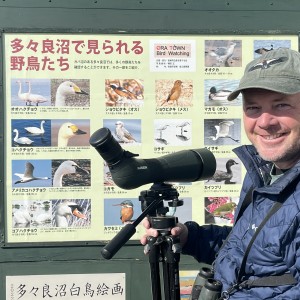
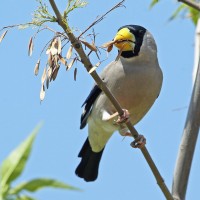 Japan in Spring: From the Ryukyu Islands to Hokkaido A private tour for friends of Carlos Sanchez.May 29 - June 12, 2025
Japan in Spring: From the Ryukyu Islands to Hokkaido A private tour for friends of Carlos Sanchez.May 29 - June 12, 2025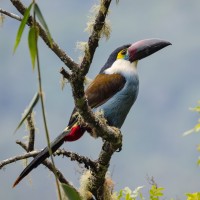 Birding from Bogota Only two spaces left!July 28 - August 3, 2025, w/Chingaza National Park extension
Birding from Bogota Only two spaces left!July 28 - August 3, 2025, w/Chingaza National Park extension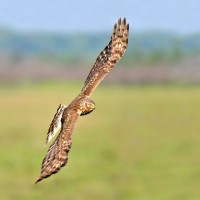 Nevada's Great BasinAugust 27 - September 3, 2025
Nevada's Great BasinAugust 27 - September 3, 2025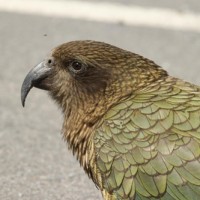 Birds & Nature of New ZealandOctober 8 - 24, 2025
Birds & Nature of New ZealandOctober 8 - 24, 2025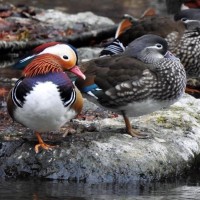 Japan Birding & Nature December 1 - 17, 2025
Japan Birding & Nature December 1 - 17, 2025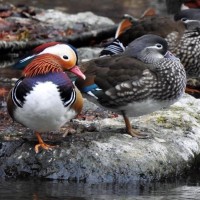 Japan Birding & Nature A private tour for friends of Andrew Mackie.January 7 - 23, 2026
Japan Birding & Nature A private tour for friends of Andrew Mackie.January 7 - 23, 2026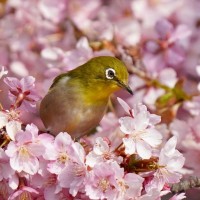 Spring in Japan: The Southern Islands April 1 - 14, 2026
Spring in Japan: The Southern Islands April 1 - 14, 2026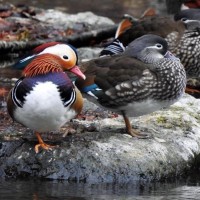 Japan Birding & Nature January 7 - 23, 2027
Japan Birding & Nature January 7 - 23, 2027






